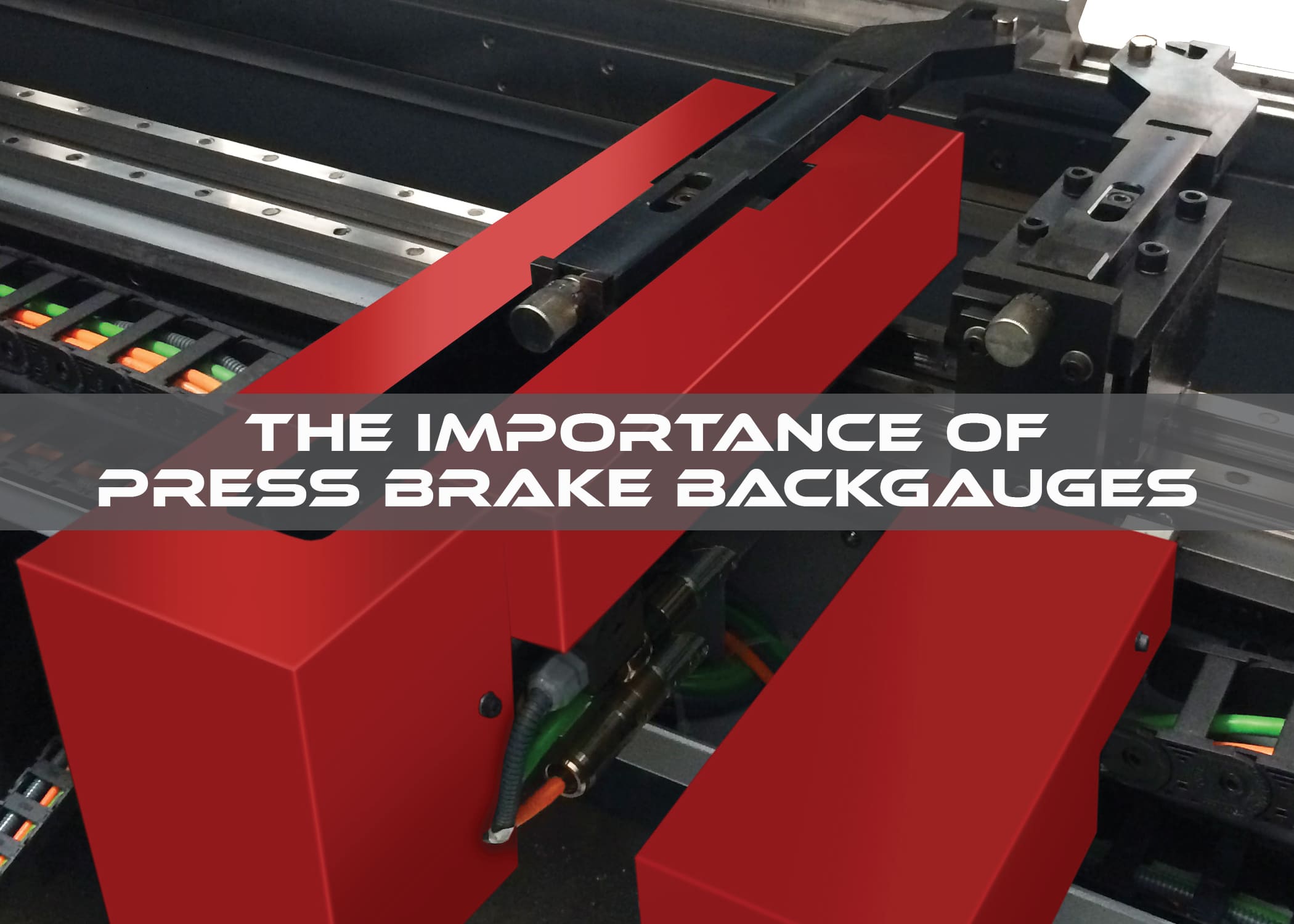The Evolution of Workpiece Positioning
As the long-ago blacksmith hammered away on a workpiece, precision was in large part determined by sight and touch, coupled with his years of experience. When machines that could work metal were invented, developed along with them were means of securing the workpieces in or on the machines so that they wouldn’t move while the operations were in progress.
The cornice brake (or leaf brake) was the first sheet metal bending machine, and it would clamp a piece of metal in place that would be bent when the leaf was manually folded over. A few decades later, the press brake would be born, and with it came the backgauge, a mechanically adjusted backstop that could be set to the correct depth for the bend. Usually attached to the brake itself, the backgauge would stop the sheet metal workpiece from going past it as the operator inserted it from the front of the machine. Held between the operator and the backgauge, the sheet would be positioned so the operator could then activate the ram and make the bend.
The press brake with its backgauge allowed an operator to repeatedly bend a batch of identical parts by inserting, bending, and removing them, one after another. When it was time for a different operation, such as a second bend in the same workpieces, the operator could then readjust the backgauge and start off on the next batch. As efficient as it was for mass production, resetting the backgauge by hand could be time consuming, and it did carry the risk of being set incorrectly.
A World of Controlled Movement
When the automatic backgauge was introduced in the 1970s, the accuracy and efficiency of press brake bending was increased exponentially. Automatic backgauges could move up and down along the X-axis, the direction that runs from the front of the machine towards the back. The operator could make a bend, then the backgauge could shift position to be ready for the next bend on the same workpiece, all without the workpiece having to be set down. A single finished workpiece could be checked for accuracy before additional pieces would be run through the same sequence of bends.
As CNC hydraulic press brakes came into prominence, an entire fleet of controllable axes were introduced that could be programmed and run from the control, many of them associated with the backgauge. The X-axis could now be split into X1 and X2, two independently moving fingers that can be positioned to different depths to better situate some workpieces, like those with an angled or stepped far side.
The ability to raise or lower a backgauge to accommodate flanged pieces became a welcome feature and this vertical movement was termed the R-axis. CNC operated machines can be equipped with two backgauge fingers that can be moved vertically independently of each other, and those movements are designated R1 and R2.
If two backgauge fingers can independently move horizontally towards or away from each other, these movements are called Z1 and Z2. This type of backgauge is particularly useful if you need to bend a wide part immediately after bending a narrow one, as both will have different points of contact for optimum positioning. A “six-axis backgauge” is one that has X1/X2, R1/R2, and Z1/Z2.
CNC press brake owners who can’t upgrade to a six-axis backgauge but need to position a workpiece at an angle can add an optional axis called X Prime or Delta X. This is done by replacing or adding equipment on an existing finger which will allow it to move a few inches in the X-axis.
The Speed of CNC
In our modern world, a program can be set up on a CNC control and run through virtually before the machine ever moves. Each step can be programmed to be carried out, with the adjustments of various axes in the backgauge and throughout the machine taking place with exacting precision.
What used to be a complicated staged-bending setup is now easy, with warnings of problems like tooling collisions being brought to the operator’s attention before they can happen. With such efficiency, short bending runs are a breeze, unlike the old days where longer runs would be needed to justify the time and expense of the setups. Controls can also save programs, so when a repeat customer returns to the shop for more of the same part, he can often receive them while he waits.
Options for Upgrades
If you are a press brake owner who would like a fancier backgauge but can’t afford a new brake, many options for upgrades and retrofits exist. Talk to your machinery sales or service provider and find out what it would take to get the best CNC backgauge and control combo for your specific machine.
The automated backgauge forever changed the landscape of metal fabrication, and as devices offering even more precise control over workpieces are developed, the modern fabricator can look forward to greater productivity and profit in the future.







